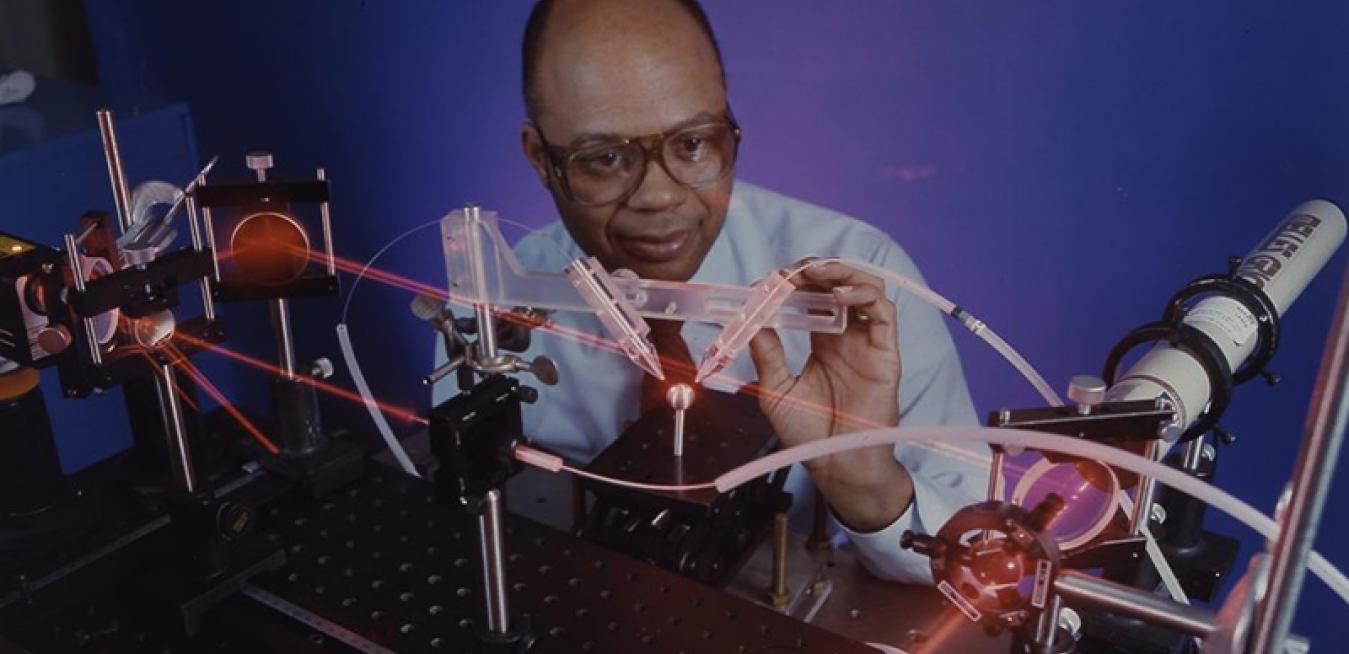BRIGHT MIND, BRIGHT IDEAS
Back before the Hamptons became a vacation hotspot for the rich and famous, the communities at the end of Long Island, New York, were largely rural and agricultural — and home to Marshall Jones, who grew up on a Southampton duck farm. From an early age, Jones distinguished himself as a math whiz, whose knack for beating the odds propelled his nearly half-century career as a GE engineer. His pioneering contributions to laser technology have earned him a place alongside Thomas Edison and Nikola Tesla in the National Inventors Hall of Fame, and now a new honor: Recently Jones received the ICON Award from GE’s African American Forum, which honors Black individuals who’ve made outstanding contributions in leadership, commitment and excellence.
Keeping up with Jones’ achievements: Jones’ work is blazingly relevant today. That’s because, among many other things, lasers are at the core of 3D printing, also known as additive manufacturing. As the industry looks to increase the speed, size, availability and ease of making 3D-printed components, Jones’ improvements in laser configuration, controls and programming will be integral. “Marshall Jones isn’t just a laser pioneer,” said Vic Abate, GE’s chief technology officer and head of GE Research. “He’s a trailblazer whose laser research is helping to transform manufacturing and build a new additive business for GE today.” He’s also kept close to his roots, promoting STEM education, spending time with fourth graders at his old elementary school, and recruiting students from historically Black colleges and universities into careers at GE. “I am certain that my elementary teachers would not have predicted that ‘little Marshall’ would be where I am today,” Jones said.
Learn more here about the incredible journey of Marshall Jones.
SENSORS AND SENSIBILITY
A native of Ukraine who came to the U.S. in the 1990s to pursue studies in analytical chemistry, Radislav Potyrailo is known to his colleagues at GE Research as a scientist who looks for answers wherever he can find them — and isn’t afraid to challenge assumptions. Potyrailo is fond of hitting the library, and during one project to develop a film that would detect toxic chemicals, he and his colleagues even found inspiration in the structure of the wings of an iridescent butterfly. His most recent achievement also relates to a sensor to detect dangerous chemicals, which could someday be used in wearable applications to help keep workplaces and people safe. Earlier this year, Potyrailo’s discovery was featured on the cover of the journal Nature Electronics.
Highly sensitive technology: Conventional sensors can help users avert fire or other accidents, but their performance is affected by temperature and humidity, and they typically have only one output. Looking past conventional technologies, Potyrailo and his team used a principle called dielectric excitation. To explain how it works, Potyrailo uses the analogy of looking at a famous painting: Leonardo da Vinci’s “Mona Lisa.” Examine this painting turned on its edge, he says, and you see a single line. That represents the single output of a traditional sensor. But turn this painting perpendicular to show its surface, and all the crucial details suddenly appear. “If you have the right variable when you turn, you see multiple colors in the painting,” he says. Or, in the case of the gas sensor, multiple outputs that tell users much more about the atmospheric conditions they are trying to measure.
Learn more about Potyrailo’s achievement here.
When COVID struck, passenger flights dried up, belly cargo disappeared and the demand for air freight skyrocketed. Now, GECAS is helping customers like S7 Airlines make the leap into the cargo world.
— QUOTE OF THE DAY —
“At a time when the original Star Wars trilogy and Superman movies dominated people’s imagination with lightsabers and superheroes that could bend steel, Marshall was showing how lasers could perform amazing feats in the real world.”
— Dale Lombardo, manager of GE’s Manufacturing Processes Laboratory
Quote: GE Reports. Images: GE Research.






